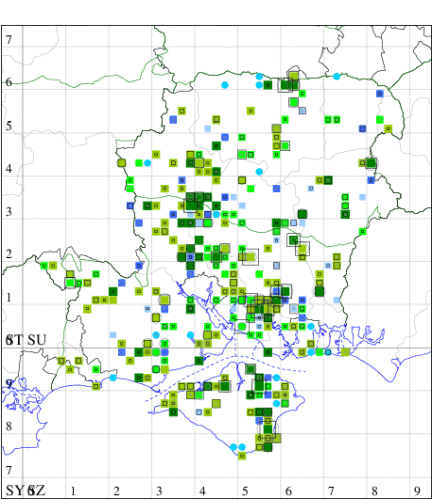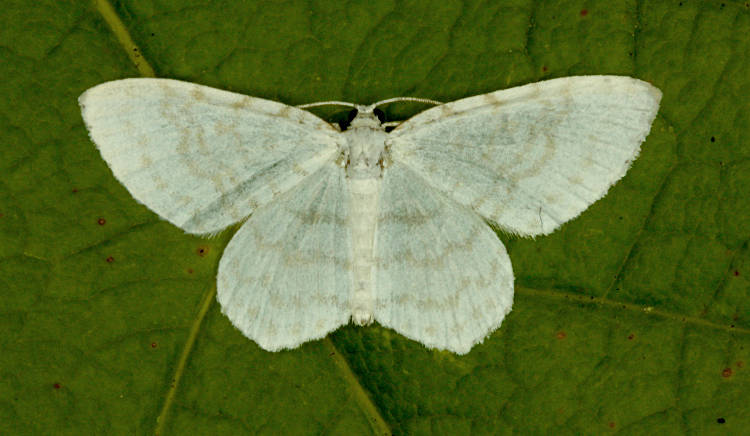Small White Wave
Asthena albulata
Checklist Number70.111 [B&F: 1875]
Verification
Record will be accepted (subject to date and location checks)
Classification
| Family: | Geometridae |
| Subfamily: | Larentiinae |
| Genus: | Asthena |
| Species: | albulata |
| Authority: | (Hufnagel, 1767) |
Common in ancient and mature broad-leaved woodland throughout much of the British Isles. In Hampshire and on the Isle of Wight the species declined alarmingly from the middle of the 20th Century. In the 1940s, it used to be so common as to be described as 'literally swarming', but a 1992 sighting in Barry Goater's Chandlers Ford garden was the only record there for many years in an area where it was previously common. Still relatively widespread on the Isle of Wight, and in the woodlands inland of Southampton with scattered records elsewhere. Wingspan 20-22 mm. Distinguished from superficially similar species by small size and pure white ground colour. Larva feeds on Hazel, Hornbeam, Silver Birch, Downy Birch and Wild Rose, over-wintering as a pupa.


The abundance in each month is indicated as follows:
 No records
No records Very occasional
Very occasional Irregular
Irregular Uncommon
Uncommon Off-peak, but not unusual
Off-peak, but not unusual Off-peak, but not unusual
Off-peak, but not unusual Main flight time
Main flight time| J | F | M | A | M | J | J | A | S | O | N | D | |
|---|---|---|---|---|---|---|---|---|---|---|---|---|
| Adult |  |  |  |  |  |  |  |  |  |  |  |  |
| Larval |  |  |  |  |  |  |  |  |  |  |  |  |






